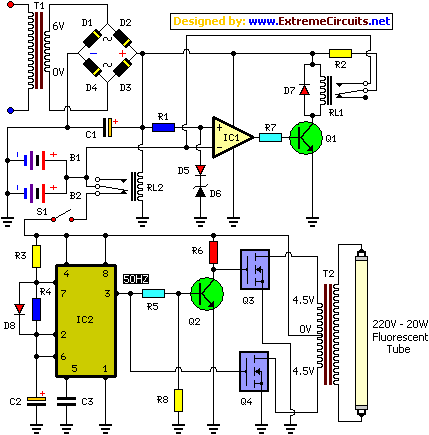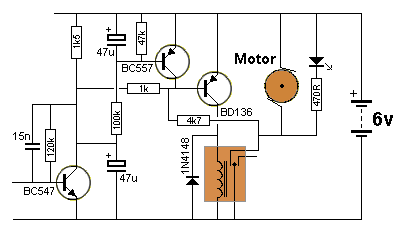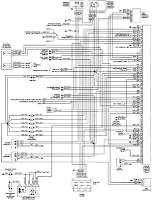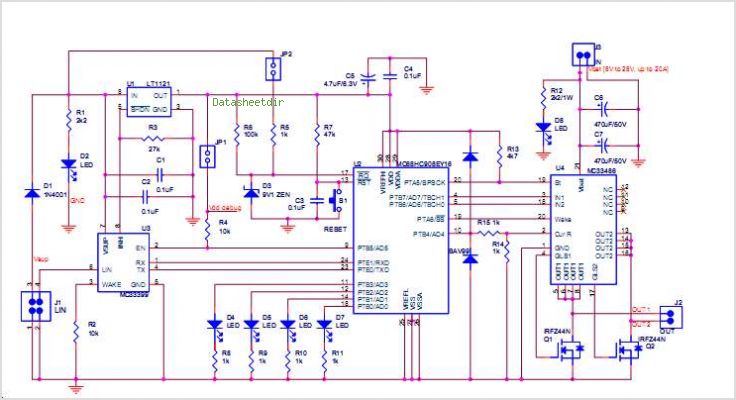
servo motor control through keypad
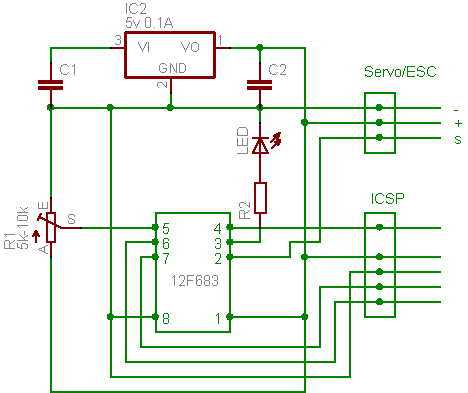
This tutorial explains how to read the content of a microcontroller's flash memory. The source microcontroller reads the memory content and displays it on the LEDs. The content consists of the program stored in the microcontroller's memory. This step is often used to verify whether the microcontroller has been programmed correctly. If the values read from a memory location match those intended for that specific location, the microcontroller has been programmed correctly. Any mismatch indicates incorrect programming. The reader should understand the basics of sending and receiving a single byte in programming mode. Refer to the 8051 Programmer basics before proceeding with this tutorial. In this mode, values are read one by one. The address of the memory location must be sent with each instruction for the value to be fetched. The microcontroller responds by sending the value stored at that location. The first byte of the instruction indicates a memory read operation (byte mode), while the second and third bytes specify the address of the memory location. Some bits of the second byte are irrelevant because the maximum size of flash memory for this family is 8K, requiring a maximum of 13 bits to address the last memory location. The target controller returns the value corresponding to the address during the fourth byte. The microcontroller's memory is organized into pages, with each page containing 256 bytes arranged in 16 rows and 16 columns. In this mode, a chunk of 256 bytes is read with a single read instruction. The second byte of the instruction specifies the address of the page to be read. The target microcontroller then sends 256 consecutive bytes immediately after the second byte of the instruction. No additional instructions are accepted until 256 data bytes have been read, and any instruction received during this time will be treated as data.
The process of reading the flash memory of a microcontroller is critical for verifying the integrity of the programming. The microcontroller typically operates in a byte mode where each read operation involves sending a specific instruction to retrieve data from designated memory addresses. The first byte of the instruction serves as an indicator for the type of operation (in this case, a memory read), while the subsequent bytes provide the necessary address information.
In a typical application, the microcontroller is set to operate in programming mode, enabling it to communicate effectively with external devices or programmers. The instructions are structured such that the address space is efficiently utilized, allowing for the retrieval of data from any of the memory locations within the 8K limit. The organization of memory into pages, with each page consisting of 256 bytes, facilitates bulk reading of data, enhancing the speed and efficiency of the programming verification process.
When executing a read instruction, the microcontroller expects a precise sequence of bytes. The second byte indicates the page address, while the third byte may contain additional address information. Once the instruction is received, the microcontroller will respond by transmitting the requested data in a sequential manner, ensuring that the entire block of 256 bytes is sent before accepting any further instructions. This method of operation minimizes errors and maximizes throughput, which is particularly important in applications requiring rapid programming and verification cycles.
Overall, understanding the mechanics of reading flash memory is essential for anyone working with microcontrollers, particularly in debugging and validation scenarios. Proper knowledge of the instruction set and memory addressing scheme is crucial for successful implementation and operation.This tutorial explains how to read the content of the microcontroller `s flash memory. The source microcontroller reads the content of the memory and displays it on the LED s. The content is nothing but the program written in the memory of microcontroller. This step is often used to verify whether microcontroller has been correctly programmed or n ot. If the values which are read from a memory location are same as the one which needs to be written at this particular memory location, then the microcontroller has been programmed correctly. If there is any mismatch, it means microcontroller has not been programmed correctly. The reader should know the basics of sending and receiving the single byte in programming mode. Refer to 8051 Programmer basics before reading this tutorial. In this mode the values are read one by one. You need to send the address of the memory location in every instruction whose value is to be fetched.
The microcontroller in return sends the value which is stored on this location. The first byte of the instruction signifies memory read operation (byte mode). The second and third byte tells the address of the memory location. Some bits of the second byte are don`t care. This is because the maximum size of flash memory for this family is 8K and in order to address the last memory location a maximum of 13 bits is required. The target controller returns the value corresponding to the address during the fourth byte. The memory of the microcontroller is arranged in form of pages. Every page contains 256 bytes arranged in 16 rows and 16 columns. In this mode, a chunk of 256 bytes is read in one read instruction. The second byte of the instruction sends the address of the page to be read. The target microcontroller in return sends 256 consecutive bytes just after the second byte of the instruction.
No instruction is accepted till 265 data bytes are read and if instruction is read it will be considered as data. 🔗 External reference
The process of reading the flash memory of a microcontroller is critical for verifying the integrity of the programming. The microcontroller typically operates in a byte mode where each read operation involves sending a specific instruction to retrieve data from designated memory addresses. The first byte of the instruction serves as an indicator for the type of operation (in this case, a memory read), while the subsequent bytes provide the necessary address information.
In a typical application, the microcontroller is set to operate in programming mode, enabling it to communicate effectively with external devices or programmers. The instructions are structured such that the address space is efficiently utilized, allowing for the retrieval of data from any of the memory locations within the 8K limit. The organization of memory into pages, with each page consisting of 256 bytes, facilitates bulk reading of data, enhancing the speed and efficiency of the programming verification process.
When executing a read instruction, the microcontroller expects a precise sequence of bytes. The second byte indicates the page address, while the third byte may contain additional address information. Once the instruction is received, the microcontroller will respond by transmitting the requested data in a sequential manner, ensuring that the entire block of 256 bytes is sent before accepting any further instructions. This method of operation minimizes errors and maximizes throughput, which is particularly important in applications requiring rapid programming and verification cycles.
Overall, understanding the mechanics of reading flash memory is essential for anyone working with microcontrollers, particularly in debugging and validation scenarios. Proper knowledge of the instruction set and memory addressing scheme is crucial for successful implementation and operation.This tutorial explains how to read the content of the microcontroller `s flash memory. The source microcontroller reads the content of the memory and displays it on the LED s. The content is nothing but the program written in the memory of microcontroller. This step is often used to verify whether microcontroller has been correctly programmed or n ot. If the values which are read from a memory location are same as the one which needs to be written at this particular memory location, then the microcontroller has been programmed correctly. If there is any mismatch, it means microcontroller has not been programmed correctly. The reader should know the basics of sending and receiving the single byte in programming mode. Refer to 8051 Programmer basics before reading this tutorial. In this mode the values are read one by one. You need to send the address of the memory location in every instruction whose value is to be fetched.
The microcontroller in return sends the value which is stored on this location. The first byte of the instruction signifies memory read operation (byte mode). The second and third byte tells the address of the memory location. Some bits of the second byte are don`t care. This is because the maximum size of flash memory for this family is 8K and in order to address the last memory location a maximum of 13 bits is required. The target controller returns the value corresponding to the address during the fourth byte. The memory of the microcontroller is arranged in form of pages. Every page contains 256 bytes arranged in 16 rows and 16 columns. In this mode, a chunk of 256 bytes is read in one read instruction. The second byte of the instruction sends the address of the page to be read. The target microcontroller in return sends 256 consecutive bytes just after the second byte of the instruction.
No instruction is accepted till 265 data bytes are read and if instruction is read it will be considered as data. 🔗 External reference
